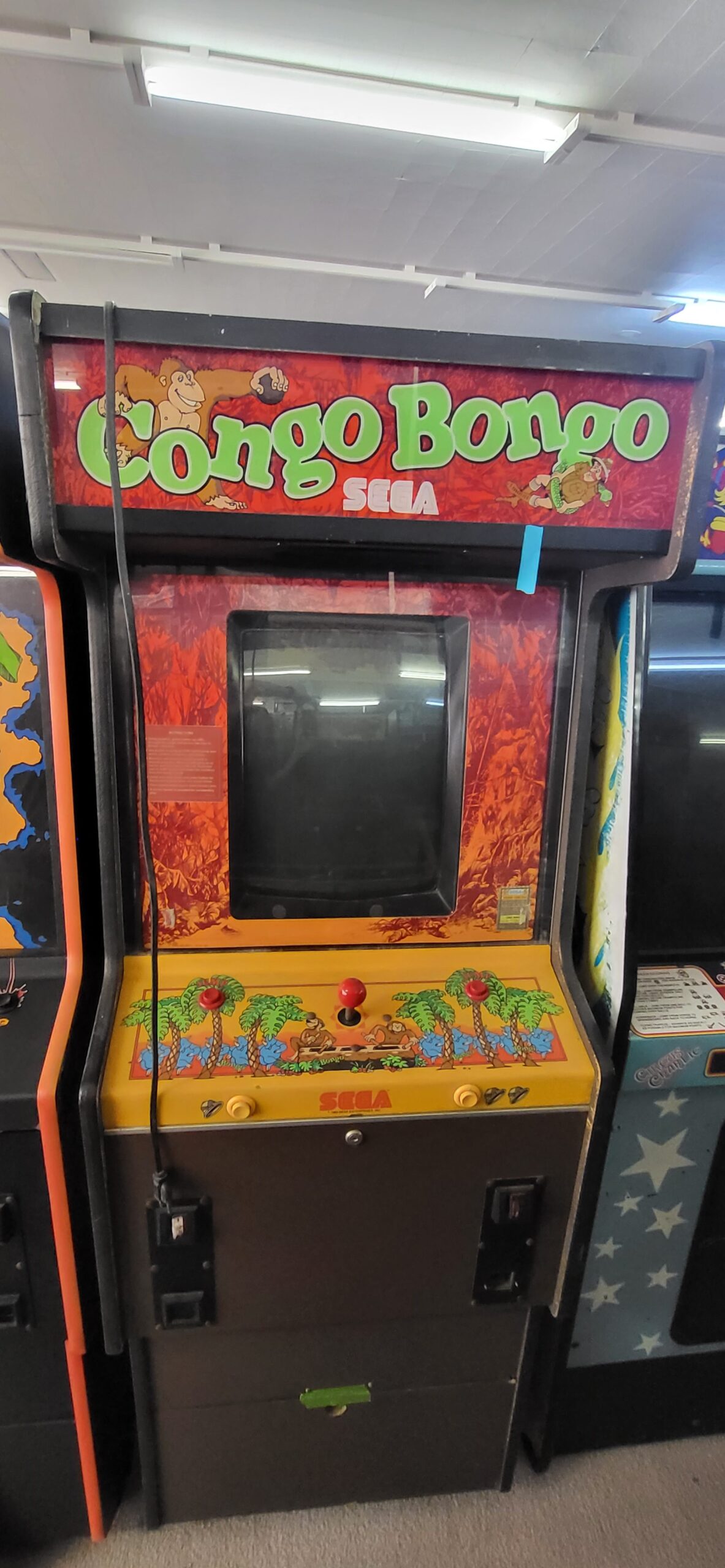
Congo Bongo
Arcade / Sega 1983
Congo Bongo is an iconic arcade game developed and released by Sega in 1983. A classic isometric platformer, Congo Bongo stands out for its unique perspective and vibrant graphics. Players embark on an adventure through the African jungle, overcoming obstacles, avoiding hazards, and confronting various wildlife to reach the elusive gorilla at the game’s finale.
Congo Bongo was conceived by Sega as a response to the success of isometric games like Zaxxon. Released during the early 1980s arcade boom, the game aimed to capitalize on the growing popularity of visually distinctive titles. The development team, led by Sega’s Yu Suzuki, integrated cutting-edge technology to create the captivating isometric graphics, pushing the boundaries of what arcade gaming could offer.
Upon its release, Congo Bongo received positive acclaim for its innovative graphics and challenging gameplay. The isometric perspective added a layer of depth and strategy, setting it apart from traditional platformers. While not achieving the same level of recognition as some of Sega’s other titles, Congo Bongo earned a reputation for its unique design and engaging mechanics.
:
Congo Bongo maintained its popularity through various ports and adaptations. It was released on home gaming consoles such as the Atari 2600, ColecoVision, and Intellivision. The success of Congo Bongo also inspired sequels, with adaptations for different platforms, including Congo Bongo for the ZX Spectrum and Congo Bongo for the Commodore 64.
Original Congo Bongo arcade cabinets are considered relatively rare due to factors such as limited production and the natural wear and tear of arcade machines over time. The rarity of the game contributes to its appeal among collectors. As of the last available data, there were approximately 5,000 Congo Bongo cabinets produced. The estimated value for a well-preserved, working cabinet ranges from $2,000 to $4,000, depending on factors like condition and the presence of original artwork.
Congo Bongo runs on Sega’s Z80-based hardware, featuring a Zilog Z80 CPU running at 4 MHz. The game utilizes a custom sprite and tile-based graphics system to render its distinctive isometric visuals. For those interested in repairing or restoring Congo Bongo cabinets, a comprehensive list of relevant parts includes the Zilog Z80 CPU, custom graphics chips, joystick controllers, power supply components, and the distinctive cabinet artwork, which is integral to the game’s aesthetic appeal. Arcade enthusiasts can refer to Sega’s official documentation for detailed hardware specifications and repair instructions.


